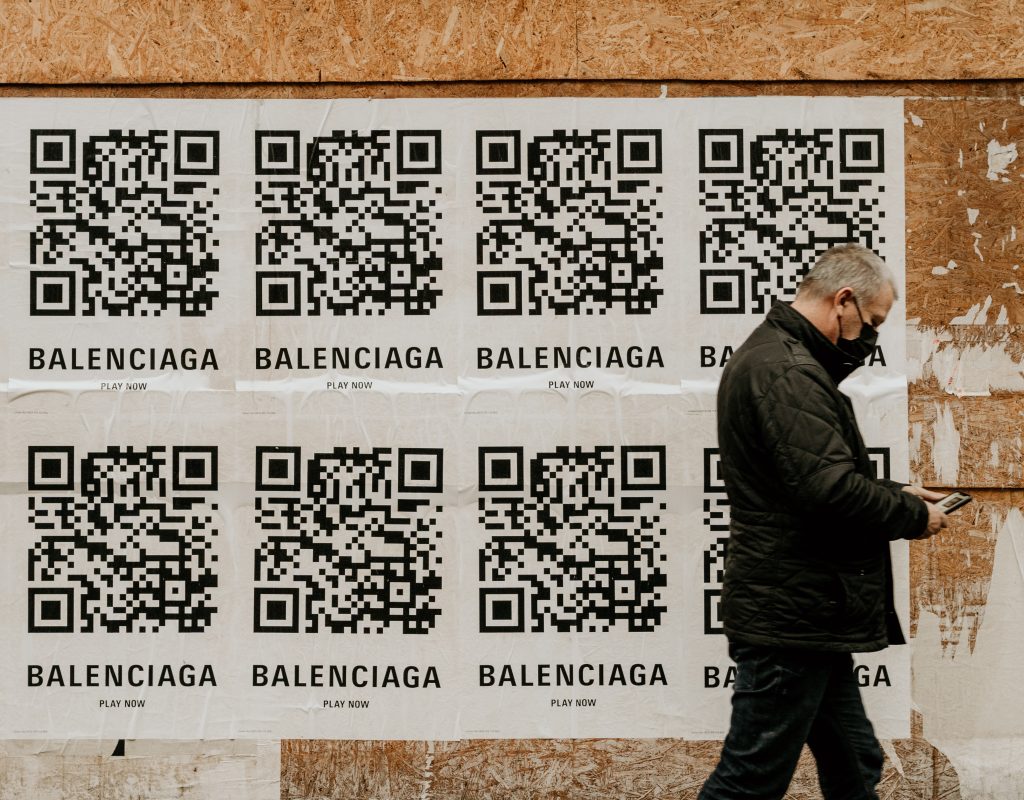QR Codes in Modern Marketing
Thinking about launching an ad campaign or delving into the world to television advertising in Australia? You’ve landed in the right place.
If you have any questions related to marketing your business across the television, radio or digital landscape, don’t hesitate to reach out; we’re here to assist in determining the ideal marketing channels for your brand.
QR codes, short for Quick Response Codes have become ubiquitous in our digital age. These versatile codes have found a significant place in marketing strategies, offering numerous ways for advertisers to connect with their audience and enhance user engagement. In this blog, we will explore the various ways in which QR codes can be implemented in marketing and how advertisers benefit from incorporating them into their campaigns.
Here’s a brief history of QR codes and when they began to gain popularity:
Invention (1994): QR codes were invented in 1994 but remained relatively unknown outside of Japan for several years. They were initially used for tracking parts in the automotive industry, where they proved to be more efficient and capable of storing more data than traditional barcodes.
Adoption in Various Industries (Early 2000s): QR codes began to gain traction in various industries in the early 2000’s. They were used for applications like inventory management, logistics, and product labelling.
Mobile Phones and QR Codes (Mid-2000s): The popularity of QR codes started to increase as mobile phones with built-in cameras became more widespread. These camera-equipped mobile devices enabled users to scan QR codes and access information instantly.
Marketing and Advertising (Late 2000s): QR codes behand to be integrated into marketing and advertising campaigns around the late 2000s. Advertisers realised the potential of QR Codes in engaging consumers by providing quick access to information, promotions, and interactive content.
Mainstream Use (2010s): The widespread adoption of smartphones and the growth of app stores, where users could download QR code scanner apps, led to the mainstream use of QR codes. They became a common sight on product packaging, advertisements, business cards and more.
Pandemic and Contactless Transactions (2020s): The COVID-19 pandemic accelerated the adoption of QR Codes for contactless transactions, such as mobile payments and restaurant menus. Many businesses adopted QR codes to minimise physical contact and enhance safety measures.
The best way to control your customer experience is to intentionally create it.
– Anonymous
Since the dawn of the digital age, marketers have grappled with the specific conundrum within the intricate landscape of the multichannel customer journey; how to smoothly guide users who are engaged with print marketing toward websites or other digital platforms.
The solution that many marketers have resorted to is displaying a brand’s web address on print marketing materials like posters and magazine ads. This method is evidently flawed. It imposes a significant burden on the potential lead, as expecting them to commit the URL to memory or write it down, then subsequently enter it character by character into a web browser address bar is impractical. In the best-case scenario, the lead might recall the brand name and search for it on Google later. However, even in these instances, the lead might inadvertently arrive at a different landing page than the one the marketer intended.
QR codes streamlined the multichannel customer journey by enabling leads to make a direct transition from a print platform to a digital destination using nothing more than their smartphone camera.

A ROCKY BEGINNING
The concept is simple; just aim your camera, scan the code, and instantly check into your favourite spot online. Well, at least that was the vision. Often, the process unfolded quite differently; you’d point your camera, only to realise that your phone’s camera didn’t support QR scanning on its own. So, you’d have to download another app, open that app, aim the camera, scan the code, and often find yourself redirected to a corporate website that wasn’t optimised for mobile devices.
QR codes, as it turns out, were simply a step ahead of their time. They necessitated a world where individuals constantly had their smartphones at their side, where all phones were equipped with exceptional cameras, and where those cameras possessed capabilities beyond merely opening websites. In recent years, both the underlying technology the way people employ it have caught up to QR codes. QR codes are not a relic of the past; they are, in fact, the future.
GOURMET GIFT SOLUTIONS – CASE STUDY
Gourmet Gift Solutions took the initiative to utilise QR code in a distinctive manner. This established company, renowned for its top-notch curated food baskets and personalised gifts, harnessed QR code marketing to offer exclusive promotions and tailored content.
They strategically positioned the digital barcodes on product packaging or included them within their gift hampers. This inventive approach enabled customers to scan the code using mobile applications, leading them directly to recipes that incorporated ingredients from the hamper they had purchased.
Not only did this elevate customer engagement by delivering interactive advertising, but it also enhanced their overall sales strategy by encouraging repeat purchases through subsequent visits. Recent case studies indicated that the user-friendly adoption of QR codes significantly amplified Gourmet Gift Solutions’ success in digital marketing, underscoring the effectiveness of this approach in positively influencing consumer behaviour.
Today, QR codes are widely recognized and used for a variety of purposes, including accessing websites, making payments, adding contacts, checking in at venues, and more. They have become an integral part of our daily lives, offering convenience and efficiency in various aspects of both digital and physical interactions. Their utility is expected to continue evolving as technology advances, further integrating QR codes into our daily routines.
Subscribe now !
Subscribe to receive exclusive updates, promotions and exciting news directly to your inbox.

